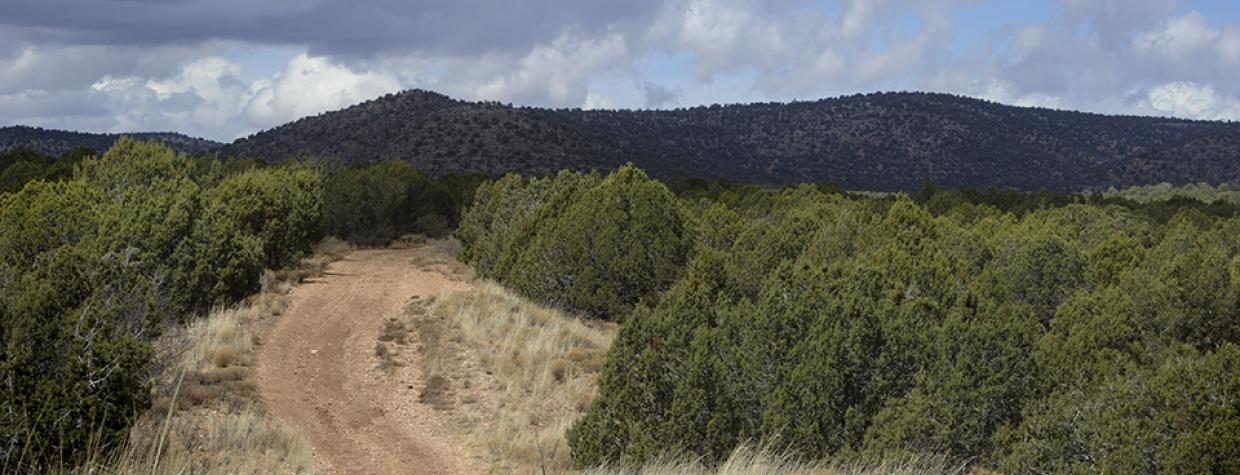Prescott National Forest, Prescott
While Prescott and Jerome were legendary a century ago for the metal deposits that drew fortune seekers from around the globe, a town nearby had its own, lesser-known mineral claim to fame. The village of Puntenney, just north of Prescott, was the epicenter of Arizona’s “lime rush” in the late 19th and early 20th centuries. Rendered from limestone and cooked in a kiln, lime was used to make mortar, plaster and glass, and to tan leather. The rocks between Prescott and Ash Fork harbored rich limestone deposits, but few were as big as the one discovered by Ohio native George Puntenney in the late 1800s. For a tour of what’s left of Puntenney’s empire, detour off State Route 89 onto Forest Road 573 through the Prescott National Forest. This 21-mile ramble across scenic, wildlife-rich country remains much as it was during Arizona’s Territorial days.
As you drive north on SR 89 from Prescott, FR 573 is on the west side of the highway, just past Milepost 344. The unsigned turnoff is easy to miss — if you cross Hell Canyon, you’ve gone too far. Head west on the dirt road for 3.2 miles to reach what remains of Puntenney: a crumbling, 40-foot-tall brick tower. After George Puntenney discovered the limestone deposit on the south side of Hell Canyon, he staked his claim and built this tower, which is believed to be the first lime kiln in Arizona. A small town, including a school and a post office, formed around the Puntenney Lime Co., and George and his wife, Lucy, raised five children there. Today, about all that’s left is the kiln.
As you continue on FR 573, on the right is Hell Canyon — likely named for how hard it was to get a wagon across the steep, rocky chasm. For 21st century drivers, the unmaintained road doesn’t seem much easier, with 2-foot-deep ruts and steep descents in some stretches. And while navigating the road demands your attention, it’s hard to not be distracted by the scenic piñon-juniper landscape. Agave stalks rise from limestone-covered hillsides, and far below, green gullies are filled with oaks and junipers.
This rocky tableland, bordered by Big Chino Valley to the south and Hell Canyon to the north, is Big Black Mesa. The area is rich with wildlife, including mule deer, javelinas, coyotes and pronghorns. Bird species commonly seen here include gray and ash-throated flycatchers, gray vireos and golden eagles. What you probably won’t see is another human. Since the lime company shut down in the 1930s, Big Black Mesa has remained wild and undeveloped.
Around Mile 10, FR 573 climbs above Limestone Canyon, offering a bird’s-eye view and a welcome respite from the technical four-wheeling. This panoramic vista at the drive’s halfway point is an excellent picnic spot. Hell Canyon drops away to the north, and on the northeastern horizon, Bill Williams Mountain rises to a 9,170-foot summit. From here, it’s another 2 miles across rutted red dirt to the national forest boundary. The geology changes from limestone to red flagstone, which lines the route, now called Bullock Road, for 7.5 miles before you reconnect with SR 89 and the modern world.
You can hang a left and drive a few miles north to Ash Fork and Interstate 40, or drive south on SR 89 to complete the loop. If you’re heading back to Prescott, you’ll notice the Drake Cement plant on the north side of Hell Canyon, just up the highway from the ruins of Puntenney. It opened in 2011, long after George Puntenney’s business closed, but it draws from the same dream and mineral riches. The lime rush lives on.
Note: Mileages are approximate.
Length: 21 miles one way (from State Route 89)
Directions: From Prescott, go north on State Route 89 for 33 miles to Forest Road 573. Turn left onto FR 573, which later becomes Bullock Road, and continue 21 miles back to SR 89.
Vehicle requirements: A high-clearance, four-wheel-drive vehicle is required. Technical four-wheel-drive experience is recommended. Do not attempt the route in wet weather.
Warning: Back-road travel can be hazardous, so be aware of weather and road conditions. Carry plenty of water. Don’t travel alone, and let someone know where you are going and when you plan to return.
Information: Chino Valley Ranger District, 928-777-2200 or www.fs.usda.gov/prescott

